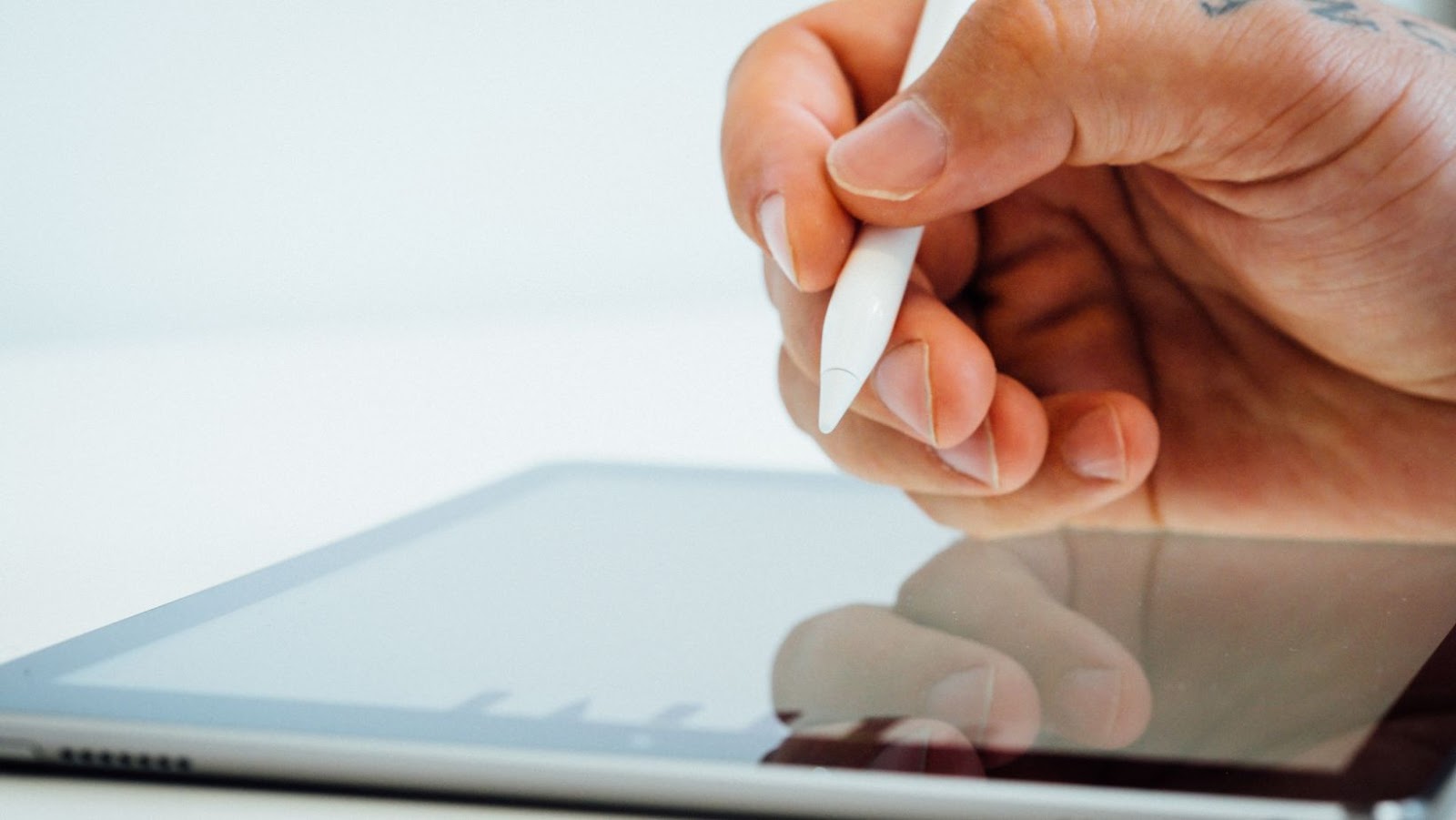The tech world has been abuzz with rumors lately about Apple’s plans for adding touch screens to its upcoming Mac lineup. This would mark a major turnabout for the tech giant, which has traditionally been wary of adding touchscreens to its traditional products, including desktop PCs and laptop computers.
In this article, we’ll discuss the possibility and implications of Apple introducing touchscreens to its Macs.
Background on Apple’s Previous Stance on Touch Screens
For many years, Apple has resisted the trend of touch screen technology for its Mac computers. This aversion has been a major point of contention between Apple and PC users, especially when Microsoft introduced the Surface Pro and other touchscreen laptops in 2012. In addition, Eastman Kodak filed nearly 100 patents related to the potential development of touchscreen Macs as far back as 2008, but Apple did not pursue these possibilities until relatively recently.
The company has yet to comment officially on its plans for adding touchscreens to Mac devices, but several recent reports have suggested that this transition is underway. With rumors circulating about new hardware designs from Apple’s research and development department, some form of screen-based interaction with Mac devices appears imminent.
Apple’s move to add touchscreens to their Mac computers could be the biggest turnabout the company has ever seen.
What We Know
In a major turnabout, Apple is reportedly working on adding touchscreens to its Mac lineup. This would be the first time that Apple has implemented such a feature, and could represent a significant shift in their product design.
We now know a few key details about what this could mean for the product lineup. But, first, let’s look at the facts.
Sources Claim That Apple is Working on a New Mac With a Touch Screen
According to a report from Bloomberg, Apple is working on a new Mac computer with a touch screen. This would be a major departure from the company’s current lineup of desktops and laptops, which all lack touchscreen capability.
Bloomberg said two sources familiar with the project confirmed that it exists and is being worked on. The sources said Apple has been working on prototype devices internally, but it is unclear when – or even if – they will ever be released.
The report follows months of speculation that the company was exploring different options for adding a touchscreen to its devices, including iPad-like detachable screens and clamshell designs similar to Microsoft’s Surface Book. It also comes after Apple CEO Tim Cook’s promise earlier this year to “explore other ways to bring touchscreen experiences” to Macs.
If true, this could mark an important turning point for Apple and its user experience strategy as it looks for new avenues of growth beyond the iPhone. Such an addition could make macOS more intuitive and invite developers who have already built touch-responsive apps for iOS and iPadOS over to desktop machines.
The Company is Reportedly Considering a Variety of Sizes and Form Factors
According to a report from Bloomberg, Apple is actively working on turning its Mac line into a touchscreen-enabled model. The company is reportedly considering the plans with various sizes and form factors, some of which may come integrated with additional hardware features.
The potential move would mark a major turnaround for the technology giant, which has long been resistant to introducing touchscreen capabilities to its computing devices. However, this new strategy may be driven by Apple’s desire to capitalize on the popularity of tablets and laptops that have adopted touch screens.
Rumors suggest that this new series of Macs could potentially be launched as soon as 2021 or 2022 and will likely run a new version of macOS tailored specifically for touchscreen devices. It’s unclear at this stage exactly what form factors will be available but it’s thought that everything from standard laptops to detachable tablet/laptops could be offered.
Apple has also been rumored to explore the possibilities of an ARM-based processor for its upcoming Macs, suggesting an emphasis on portability and performance gains over current Intel-based processors found in most other Macs. If these rumors prove true, it would likely mean improved battery life and thinner designs are part of Apple’s roadmap for their next-generation MacBook range. Ultimately, only time will tell exactly how things shake out regarding hardware offerings and features when Apple launches its potential move into integrating touchscreens into their Mac lineup in 2021 or 2022.
Touchscreens on Macs could offer various uses beyond just traditional display taps, including enhanced views when using photo or video editing software, game play (such as adding tactile feedback with action games), and even the ability to interact with virtual reality applications.
What Could This Mean?
Apple’s move to add touchscreens to their Mac computers could be the biggest turnabout the company has ever seen. With the addition of this technology, Mac users could be able to interact with their devices more intuitively. This could mean a complete change in how Mac users interact with their computers, which has a major impact on the industry.
Let’s look into what this could mean for the future of computing.
Touchscreens Could Open Up New Possibilities for Mac Users
If rumors are true that Apple is considering adding touchscreens to its Macs, it could represent a major shift in how users interact with their machines. While this would certainly open up new possibilities, such as allowing full touchscreen support on Macs, most user interactions will likely remain centered around traditional keyboard and mouse input.
Touchscreens on Macs could offer various uses beyond just traditional display taps, including enhanced views when using photo or video editing software, game play (such as adding tactile feedback with action games), and even the ability to interact with virtual reality applications. Touchscreens may also enable user-friendly applications such as handwriting recognition and gesture-based control of applications. Surely these advances in screen technology will revolutionize the way we use our devices in the future.
In addition to demonstrating a commitment to keep up with modern technology trends, this move by Apple may indicate that the company is feeling pressure from Microsoft’s Surface line of PCs/tablets running Windows 10 which generally come equipped with touchscreens — though not necessarily from all computing customers. Suppose Apple does indeed add touchscreens to its products. In that case, customer reaction could range from increased usage of software specifically designed for such input methods or users simply becoming accustomed to interacting more intuitively in the computing environment versus hunting down the right mouse pointer location for their target operations. Either way, adding touchscreens could further secure Apple’s solid role as an innovator in consumer electronics industry.
It Could Also Lead to a More Unified Experience Across Apple Devices
The potential introduction of touch screens to Macs could lead to a more cohesive and uniform experience across Apple devices. A unified user experience could be incredibly beneficial and provide an improved, simplified interface. In addition, many consumers already use Apple products in combination with each other and having further similarities across devices would likely make it easier for them to synchronize their experience.
Furthermore, adding touch interfaces to Macs could help Apple keep up with changing trends in technology. Touch screen computing has become essential to many people’s lives, used through phones, tablets, laptops, and more. Enabling such a fundamental aspect of current technology on Macs would give users access to a more modern computing platform that many have grown accustomed too. Additionally, incorporating touch technology onto its long-standing product line could help Apple stay ahead of the curve as more competitors enter the market with similar offerings.
In conclusion, introducing touch screens on Macs could benefit users through improved performance and indirectly in staying competitive in an ever-changing tech landscape. Providing consumers with a consistent user experience combined with cutting-edge performance would undoubtedly be advantageous for the company and their customers.
Potential Challenges
Macs are hugely popular with professional creatives, and the touch screen technology could be a revolutionary addition to the Mac experience. However, there will be challenges with integrating touch screens into the Mac platform, and some users may find it difficult and confusing to use.
This article will explore the potential challenges of Macs with touch screens.
Touchscreens Could Lead to a Decrease in Battery Life
Introducing touchscreens to Macs could lead to a decrease in battery life for laptops and desktop computers. Typically, touchscreens require more power than traditional non-touch displays and laptops with touch screens will use more power than those without. Additionally, traditional laptops are designed with passive cooling, where warm air can escape from the laptop naturally through vents and slots. However, touch screen laptops may require more active cooling, involving fans or extra air movement within the laptop that could diminish battery life by reducing efficiency.
Furthermore, adding a touchscreen to a laptop will add weight due to the extra components needed (tolerance control systems, exciters etc.). Although weight isn’t usually an issue for desktop computers, it’s one of the main factors affecting laptop performance and usability, so any increase in weight due to adding a touchscreen might be counterproductive. Additionally, having a heavier device would take extra energy just to move it around—another potential source of decreased battery life.
Introducing touchscreens to Macs could lead to a decrease in battery life for laptops and desktop computers.
It Could Also be Difficult to Adapt Existing Apps to a Touchscreen Interface
Existing apps must be designed to take advantage of a touch interface, offering new ways for users to interact with content on their Macs. This will be no small undertaking and could challenge coders and developers accustomed to working with keyboard and mouse inputs. Furthermore, given the large library of apps already available, it might not be feasible for all app manufacturers to update all of their existing apps for a touchscreen Mac entirely by themselves.
It may instead require dedicated developer resources from Apple and partnership programs with developers for the touchscreen transition on Macs to be smooth.
Moreover, certain challenges come with transitioning from what has historically been an exact and predictable input interface (keyboard and mouse) to a more visual interface (touchscreen). For example, although the different touch gestures (such as tap or swipe) will offer quick access to different functions in macOS applications, they can also lead to unintentional actions in certain apps which may result in unintentional data loss or other problems. Therefore, Apple will need to design features around this transition, allowing users more control over how they interact with apps while using a touchscreen device.
tags = Apple Silicon Mac Pro, Apple, New MacBook Pro, Mac Mini, Mark Gurman, chip options, M2 Max, M2 Ultra and M2 Extreme, gurman cpus m1 pro 8kadorno9to5mac, macOS Ventura 13.3, gurman apple pro m2 bar miniledadorno9to5mac




